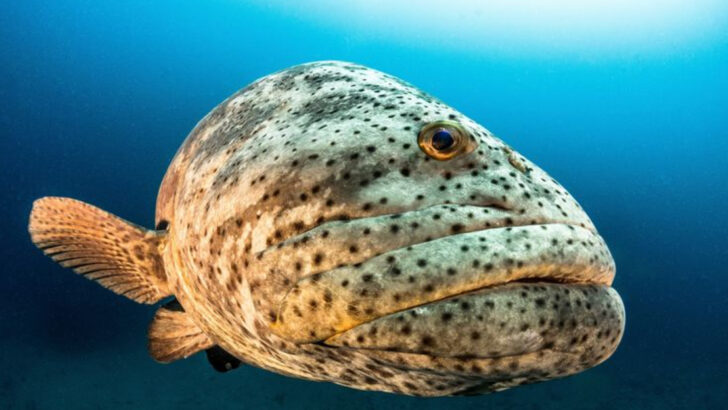Florida’s waters are home to creatures that will leave you awestruck—this isn’t your average aquarium fare. We’re talking about fish so bold, so wild, they practically own the seas.
From the crystal-clear shores of the Gulf to the mysterious depths of the Atlantic, these fish are the true rulers of Florida’s waters. They’re fierce, they’re colorful, and they’re completely unapologetic about their presence.
Whether they’re darting through coral reefs, lurking beneath the waves, or flashing their neon colors in the sun, these fish aren’t just swimming—they’re making a statement. Forget your typical fish tales. These 15 swimmers are the stuff of legend. Get ready to dive in!
Tarpon
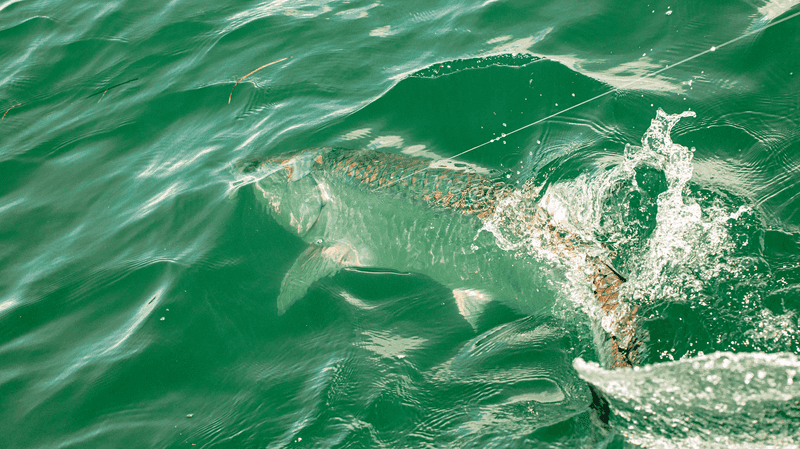
The tarpon, often called the ‘silver king,’ is a staple of Florida’s coastal waterways. Known for its impressive leaps and spirited fight, it is a favorite among anglers. These fish can grow to remarkable sizes, with some reaching up to eight feet in length. Often found in shallow waters, tarpons play a vital role in the food chain. They primarily feed on fish and crustaceans, using their bucket-like mouths to scoop up prey. Their presence is crucial for maintaining the balance of marine ecosystems, making them an iconic species of Florida’s waters.
Snook
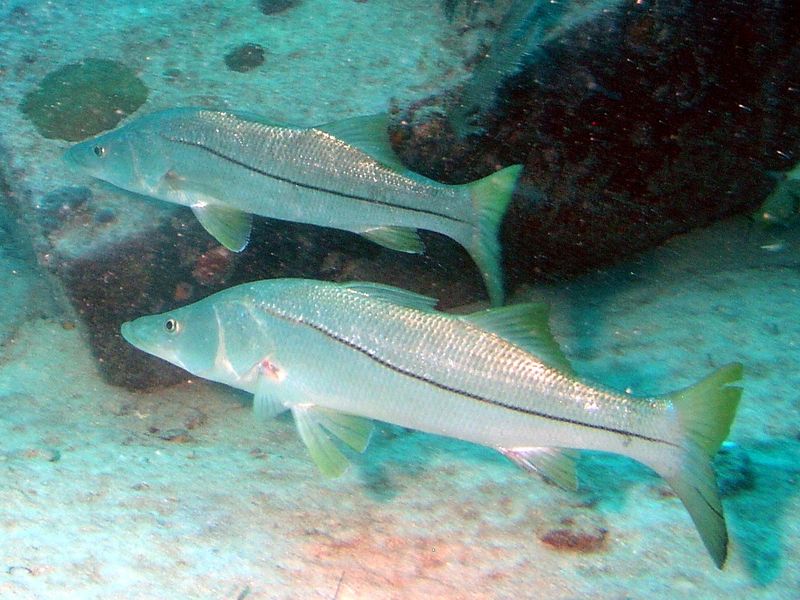
The snook, with its streamlined body and distinct lateral line, is another emblematic fish of Florida. Found primarily in the warmer coastal waters, snooks are known for their acrobatic jumps and strong runs when hooked. They inhabit estuaries, mangroves, and sometimes venture into freshwater. Snooks are opportunistic feeders, preying on fish and shrimp, contributing to their role as key predators. During certain times of the year, they migrate to spawn, which is a critical aspect of their life cycle and essential for their population sustainability.
Redfish (Red Drum)
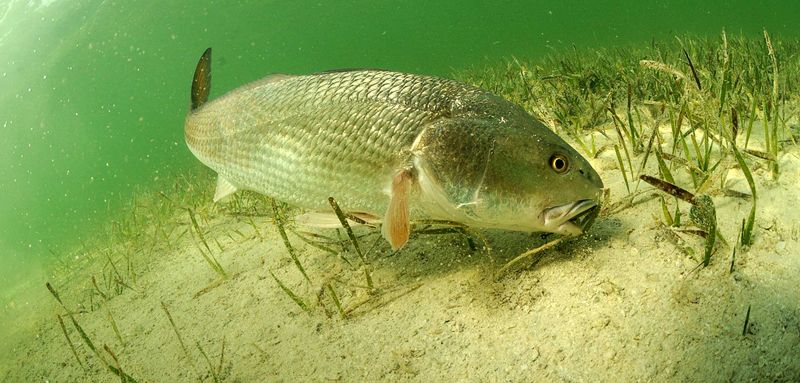
Redfish, or red drum, are known for their characteristic black spot near the tail. Found abundantly along Florida’s Gulf Coast, they thrive in the seagrass beds and marshy areas. Redfish are strong fighters, making them a prized catch for sport fishermen. They have a varied diet, feeding on crabs, shrimp, and small fish. Their adaptability to different environments, from saltwater to brackish, showcases their resilience. As they mature, their coppery-red scales make them easily recognizable, symbolizing the rich marine life of Florida’s coastal ecosystems.
Sailfish
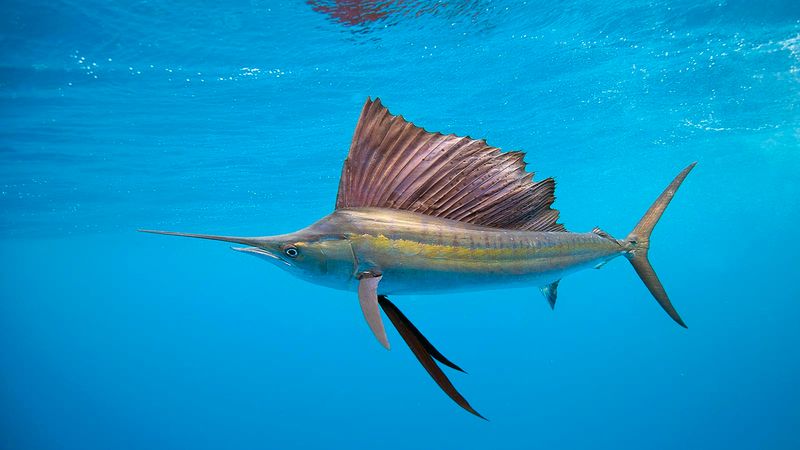
The sailfish holds the title of the fastest fish in the ocean, reaching speeds up to 68 mph. Found in the warm waters off Florida’s coast, they are known for their iconic, sail-like dorsal fin. These predators are masters of the hunt, often working in groups to corral schools of fish. Their elongated bills are used to slash through prey, making feeding efficient. Sailfish are also known for their spectacular acrobatics, leaping and changing direction with ease. Observing a sailfish in action is witnessing the epitome of marine grace and agility.
Goliath Grouper
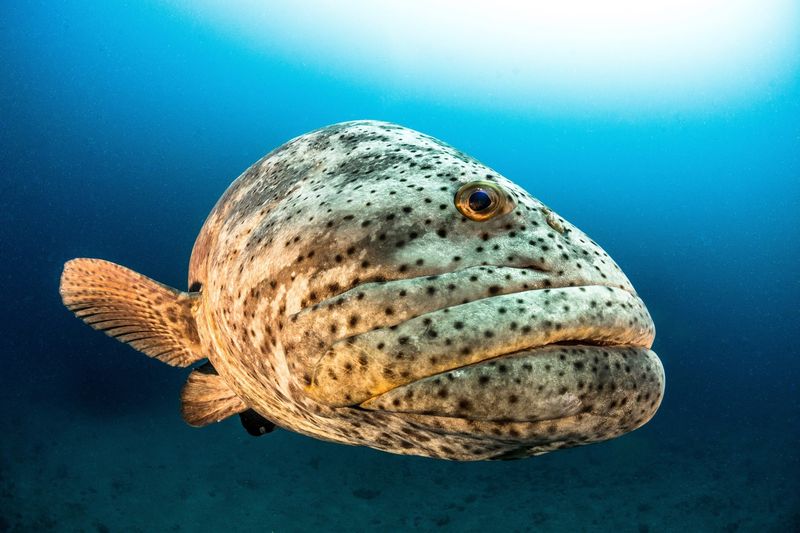
Goliath groupers are true giants of the sea, reaching weights over 800 pounds. They inhabit Florida’s coral reefs and shipwrecks, adding to the diverse marine environment. These groupers have a slow, ponderous movement, but their size and strength are unmatched. Goliath groupers play a crucial ecological role by controlling the population of reef-dwelling prey. Their presence indicates a healthy, balanced reef ecosystem. Despite their intimidating size, they are generally curious rather than aggressive, offering divers an extraordinary sighting experience in Florida’s underwater realms.
Bonefish
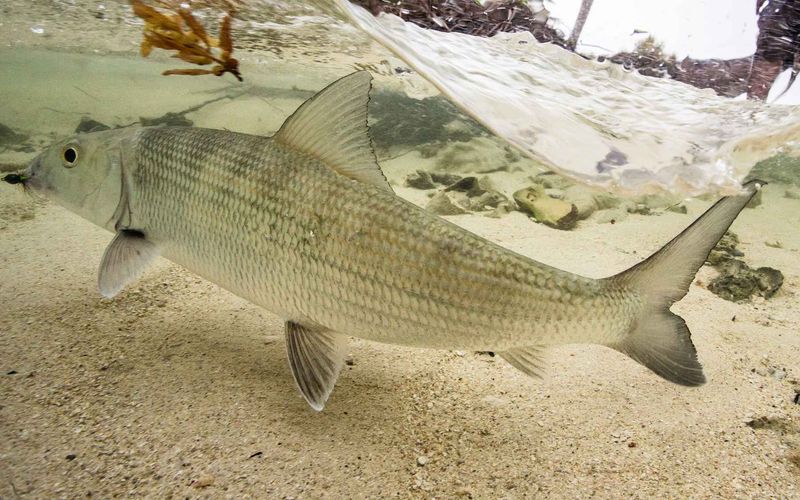
Bonefish are renowned for their elusive nature and lightning-fast speed. Found mostly in the shallow flats of the Florida Keys, they are a favorite among fly fishermen seeking a challenging catch. Bonefish have a streamlined body perfectly adapted for quick bursts and turning agility. They feed on small invertebrates, crustaceans, and mollusks, using their keen sense of smell to locate prey under the sand. Catching a bonefish is often described as hooking a ‘ghost,’ due to their stealthy approach. Their presence is a testament to the vibrant and dynamic ecosystems of Florida’s coastal flats.
Hammerhead Shark
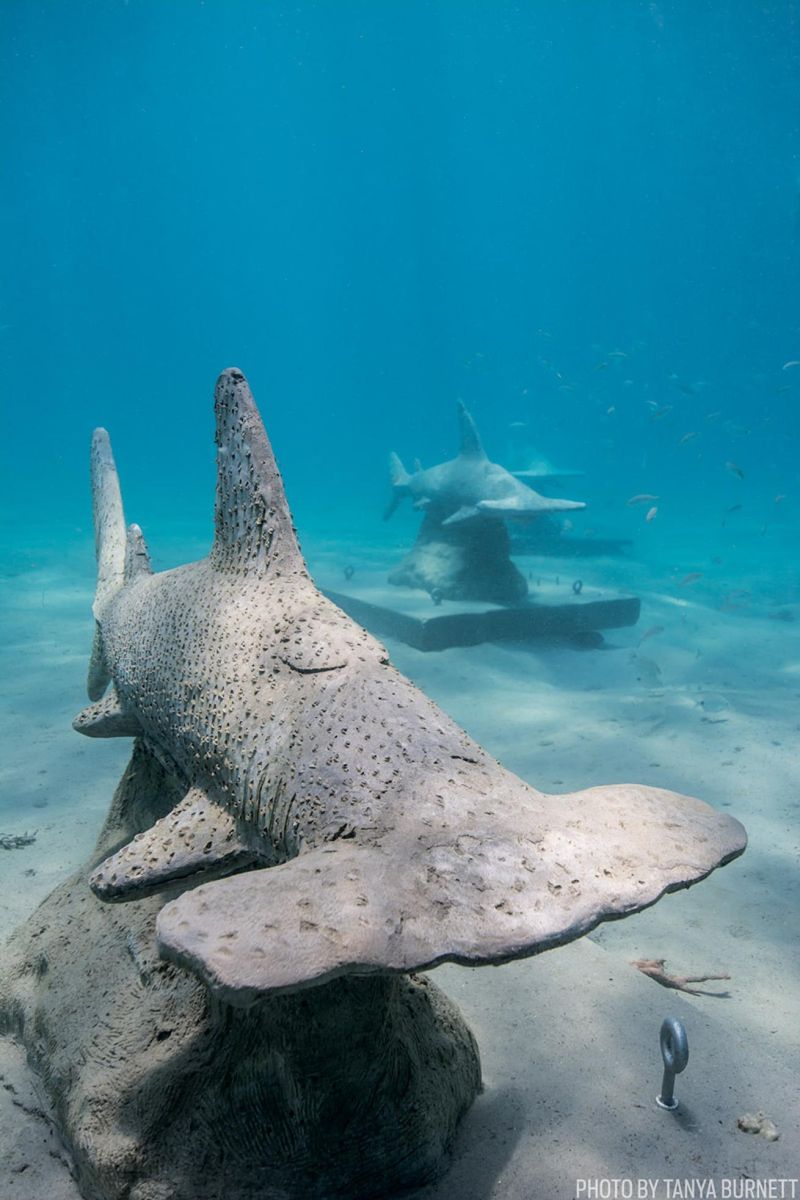
The hammerhead shark is instantly recognizable due to its distinctive, hammer-shaped head. These sharks roam Florida’s warm coastal waters, often seen swimming in schools. Their unique head structure enhances vision and sensory perception, aiding in tracking prey like stingrays and fish. Hammerheads are crucial apex predators, maintaining the health of marine ecosystems by keeping prey populations in check. Despite their fearsome reputation, they are generally not aggressive towards humans. Observing hammerheads in Florida’s waters offers a glimpse into the fascinating adaptations of marine life.
Permit
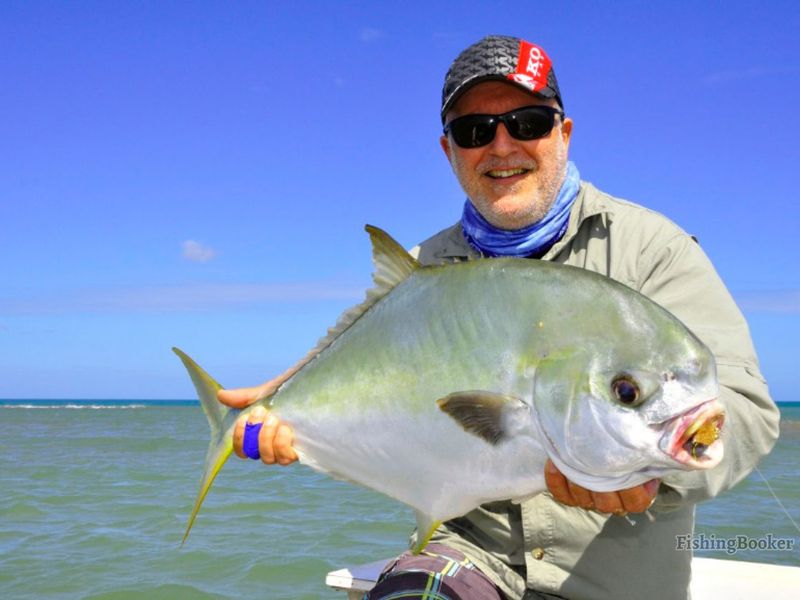
Permit are prized by sport fishermen for their strength and elusive nature. Found over sandy and rocky bottoms, they are often seen in the waters of the Florida Keys. Their deep, compressed bodies and forked tails make them powerful swimmers. Permits feed primarily on crabs and shrimp, using their blunt, strong teeth to crush shells. Their elusive behavior and sudden, strong runs make them a challenging yet rewarding catch. The presence of permit in Florida’s waters signifies the rich biodiversity and the challenges these waters offer to fishing enthusiasts.
Mahi-Mahi (Dolphinfish)
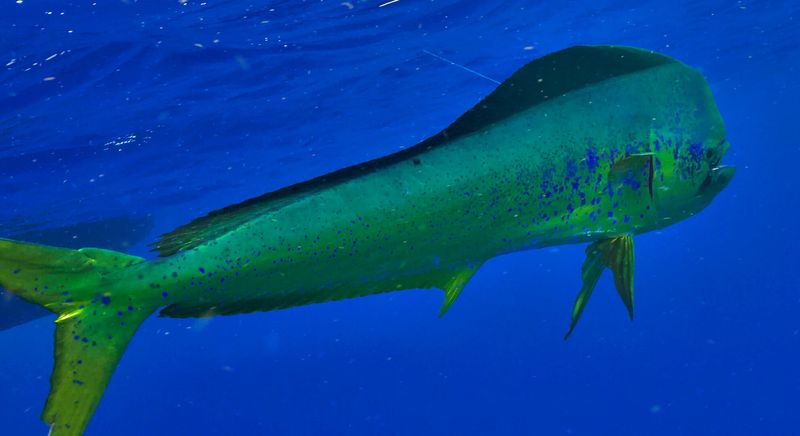
Mahi-mahi, or dolphinfish, are renowned for their dazzling colors and acrobatic leaps. They thrive in the warm waters of the Gulf of Mexico and the Atlantic Ocean near Florida. Mahi-mahi are fast-growing and opportunistic feeders, preying on fish, crustaceans, and cephalopods. They are often found near floating debris or seaweed, taking advantage of the cover to ambush prey. Their striking appearance and spirited fight when hooked make them a favorite among fishermen. Mahi-mahi represent the vibrant and lively nature of Florida’s marine habitats.
Sheepshead
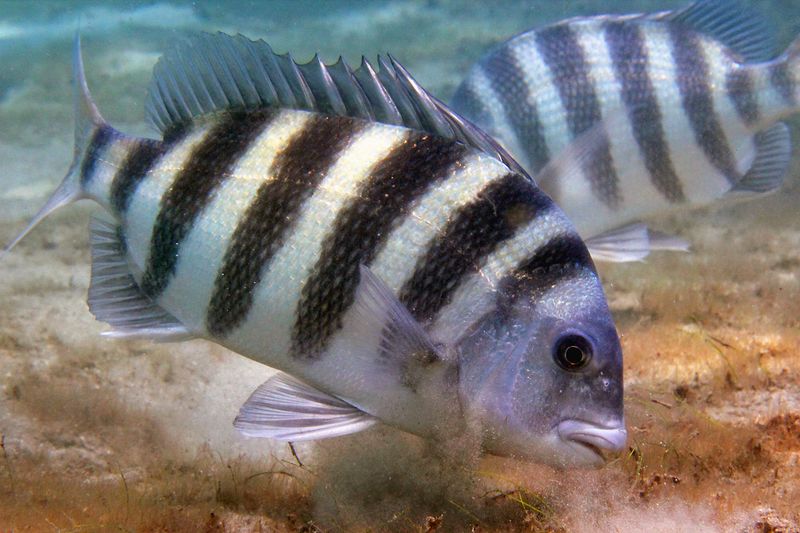
Sheepshead fish are easily recognizable by their black and white vertical stripes and human-like teeth. Found around jetties, piers, and rocky areas, they are common along Florida’s coast. Sheepshead have a varied diet, feeding on crustaceans and shellfish using their strong teeth to crush shells. Their ability to thrive in different habitats makes them adaptable and sustainable. Sheepshead are known for their cautious nature, often making anglers work hard for a catch. These fish contribute to the rich tapestry of Florida’s marine environments, reflecting adaptability and resourcefulness.
Largemouth Bass
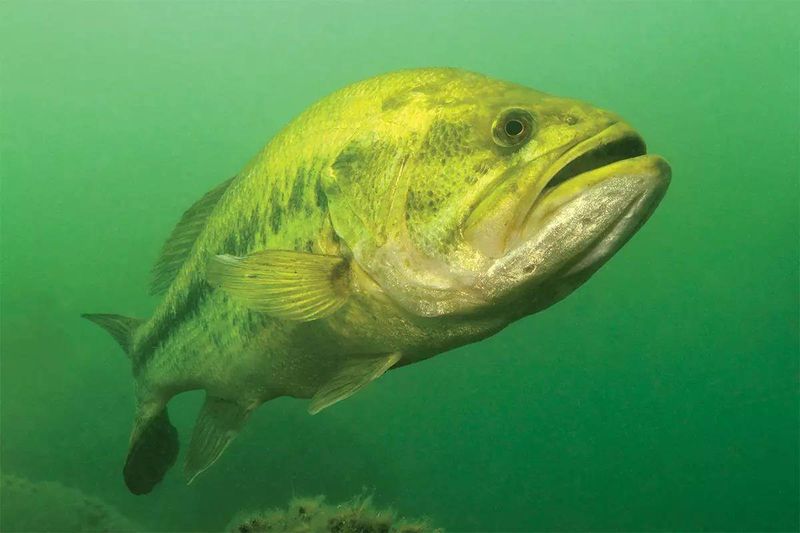
Largemouth bass are a freshwater favorite, thriving in Florida’s numerous lakes and rivers. Recognizable by their large mouths and voracious appetite, they are top predators in their habitats. Largemouth bass primarily feed on fish, frogs, and insects. They are known for their explosive strikes and aerial acrobatics when hooked, making them a popular target for sport fishing. This species is integral to Florida’s freshwater ecosystems, helping to control populations of smaller fish and maintain ecological balance. Catching a largemouth bass is a quintessential Florida fishing experience.
Blacktip Shark
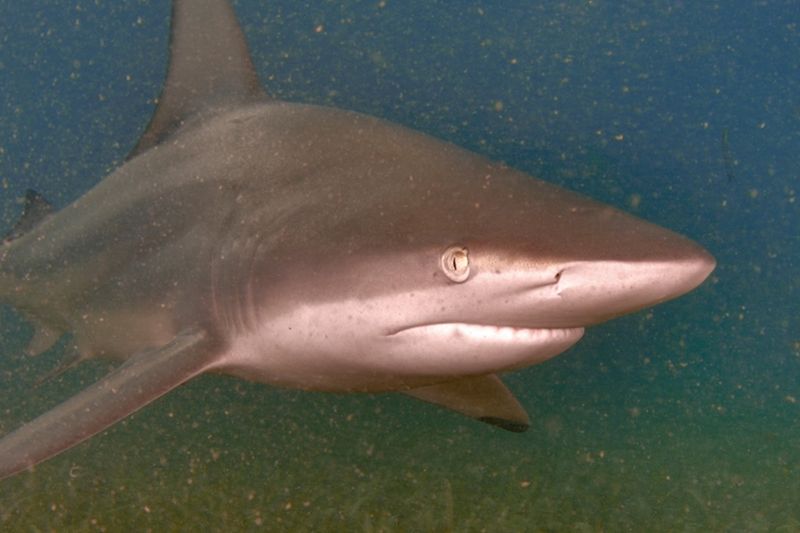
Blacktip sharks are a common sight in Florida’s coastal waters, known for their speed and agility. They are easily identifiable by the distinct black tips on their fins. Blacktips are active predators, feeding on fish and invertebrates, often near the surface. Their energetic nature and tendency to leap when hooked make them exciting for anglers. Blacktip sharks play a vital role in the marine ecosystem, keeping fish populations balanced. Observing their sleek form and swift movements is a testament to the dynamic marine life that inhabits Florida’s waters.
Spotted Seatrout
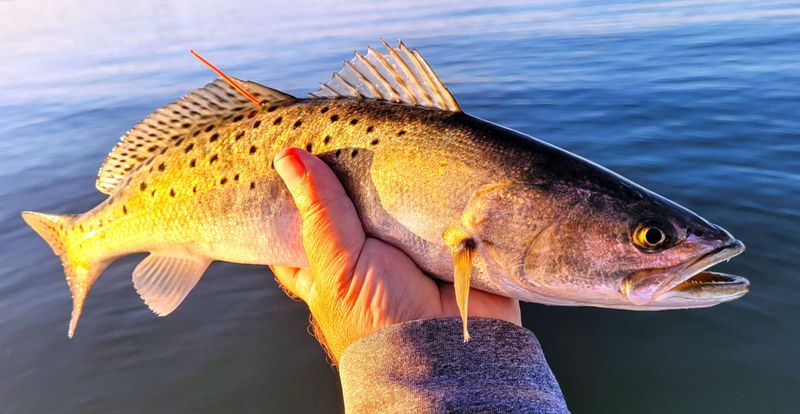
Spotted seatrout are popular among Florida’s inshore anglers, known for their distinctive spots and light, flaky flesh. They inhabit bays, estuaries, and coastal waters, often found near seagrass beds. Spotted seatrout are opportunistic feeders, preying on shrimp, crabs, and small fish. Their predatory nature helps maintain the ecological balance within their habitats. These fish are sensitive to water quality, serving as indicators of environmental health. Anglers prize them not only for their taste but also for the challenge they present, embodying the rich diversity of Florida’s coastal waters.
Atlantic Bluefin Tuna
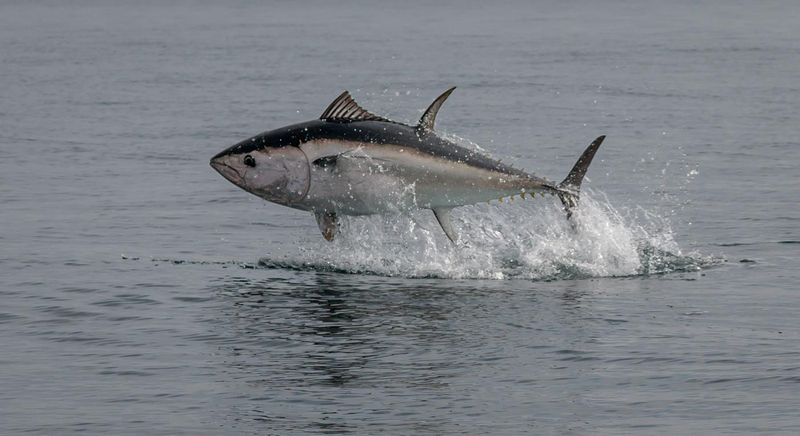
The Atlantic bluefin tuna is a marvel of speed and strength, roaming the deep waters off Florida’s coast. Known for their immense size and power, these tunas are highly sought after. They are capable of traveling vast distances and diving to great depths in pursuit of prey. Bluefin tuna feed primarily on fish and squid, using their speed and agility to capture meals. Their presence is indicative of a healthy, thriving ocean ecosystem. Fishing for bluefin tuna is both challenging and rewarding, showcasing Florida’s diverse marine life and the thrill of the chase.
Florida Gar
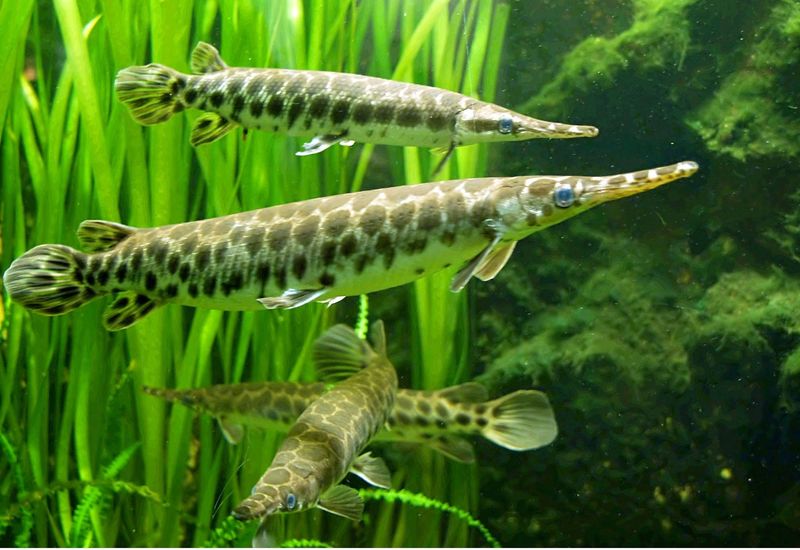
Florida gar are ancient fish with a lineage dating back millions of years. They inhabit freshwater environments like rivers and lakes, particularly in northern Florida. Gars are easily recognizable by their elongated bodies and toothy snouts. They are ambush predators, relying on stealth and quick bursts of speed to capture prey such as fish and crustaceans. Florida gars are essential to their ecosystems, helping to control prey populations. Their resilience and ability to thrive in varied environments make them a fascinating subject for study, reflecting Florida’s diverse aquatic heritage.

